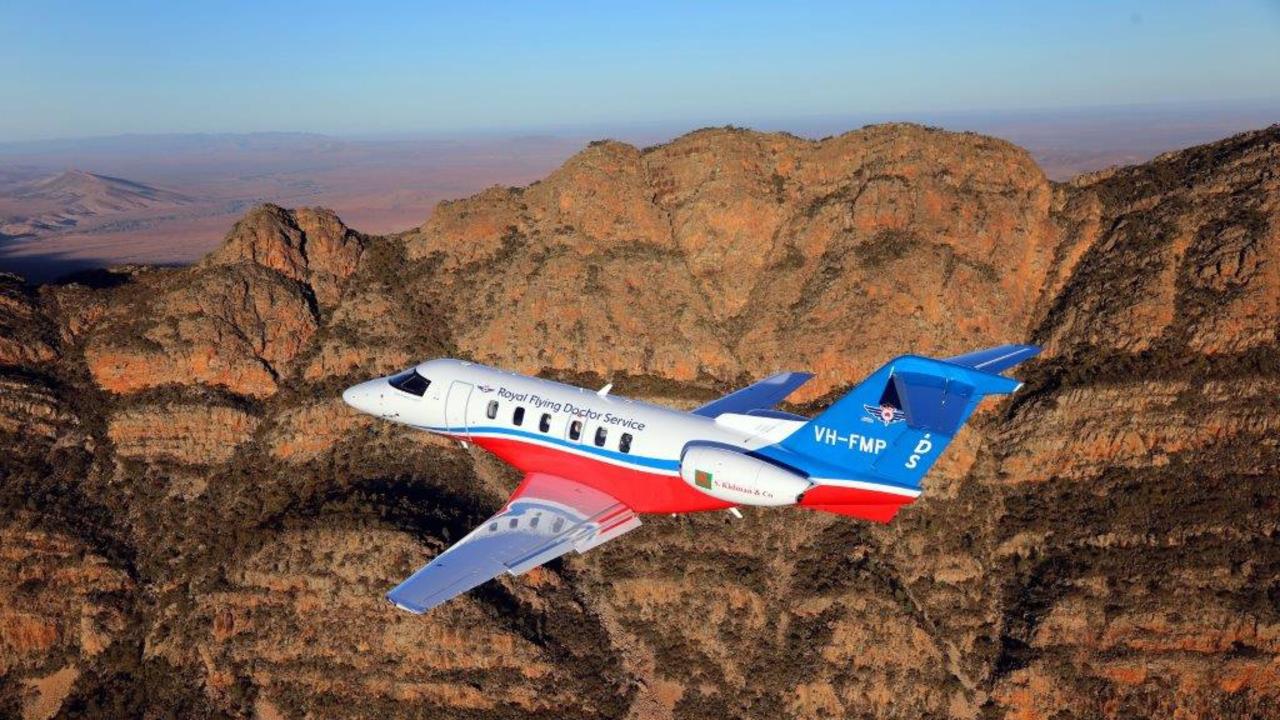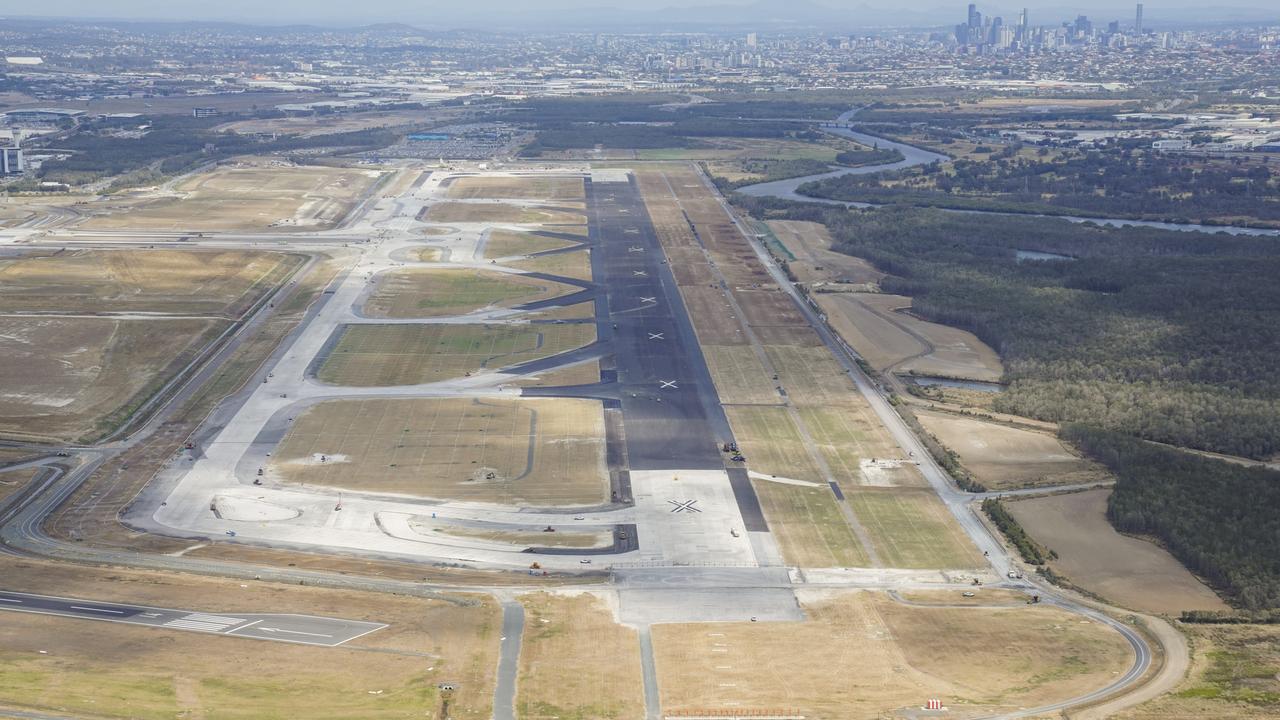How Brisbane Airport has gone from unremarkable travel hub to masterplanned metropolis
In a little over two decades, Brisbane Airport has undergone a massive transformation from an unremarkable travel hub to a masterplanned metropolis, writes Neale Maynard.
Future QLD
Don't miss out on the headlines from Future QLD. Followed categories will be added to My News.
WHEN a syndicate headed by European airport giant Amsterdam Airport Schiphol (AAS) purchased Brisbane Airport from the federal government in 1997, the Dutch airport executive who would ultimately run the privatised facility had big plans for the future.
“We’ll take it from a city airport, to an airport city,” was the pitch from Brisbane Airport Corporation’s (BAC) then-chief executive Koen Rooijmans, who made the move from the Netherlands to Brisbane to pilot a dramatic change in the airport’s direction.
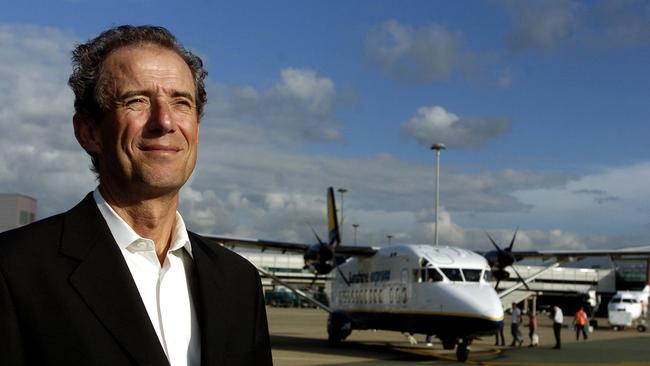
Rooijmans and two colleagues arrived in Brisbane on a pre-purchase mission well ahead of their formal bid, making a due diligence check on the numbers from data rooms to ensure the prospective purchase offered the value they were hoping for.
There was a lot of money at stake: AAS was part of a consortium that ultimately paid what seemed like a crazy sum of money for a 50-year lease on the facility: $1.387 billion.
In one of his first interviews, I drove Rooijmans and his colleagues from Brisbane’s Stamford Plaza hotel back to the airport to fly home to Amsterdam, my tape recorder capturing an enthusiastic aviation executive clearly upbeat about the consortium’s prospects — and also about what private ownership would mean for Brisbane Airport.
Once they had made the winning bid, his enthusiasm continued — with that memorable “city airport/airport city” line flowing from a later interview.
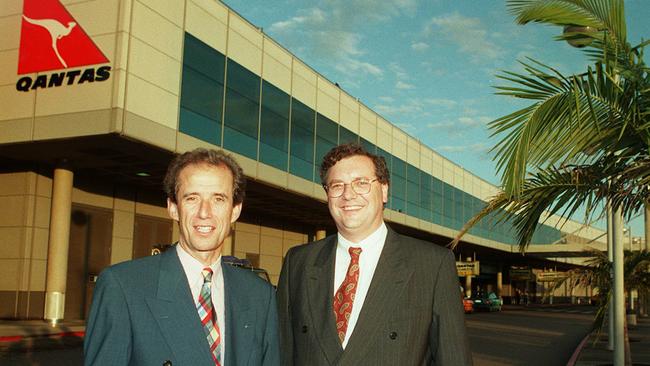
At the time, Rooijmans’ pitch made a nice headline — but it was at odds with public perceptions of what Australian airports were.
They had long been regarded as travel hubs and not much more.
The idea that they could be retail and real estate gold mines was revolutionary, as strange as that now seems.
Rooijmans’ vision also seemed a little over-the-top given that change had historically been slow at Brisbane Airport.
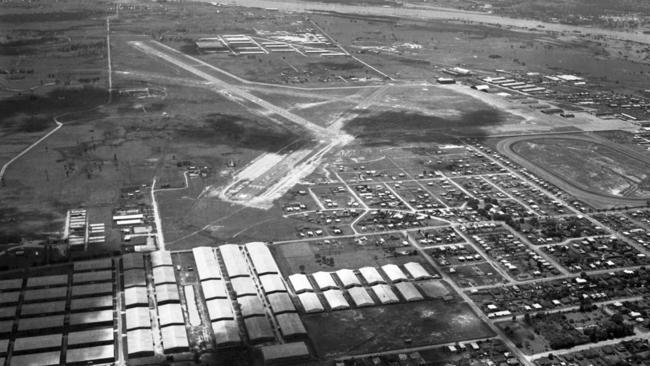
recipe for success
As The Courier-Mail’s aviation editor when the purchase went through, I still had memories of walking from a jumbo jet across the tarmac to the old international terminal (aka “The Shed”) after returning home from my first overseas flight only 11 years earlier, and waving to my grandmother as she walked from the same shed across the same tarmac on her first trip abroad 15 years before that.
Same shed, different decades.
The airport’s location — on fairly swampy ground — meant that construction timetables were dragged out because sand fill needed to be added — and allowed to settle for years.
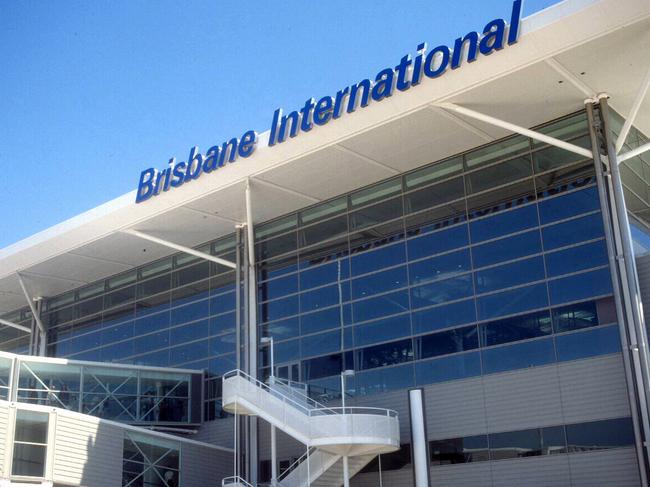
There were some positive signs, though — a new international terminal had finally been opened in September 1995 (after years of waiting for its foundations to settle) and airbridges had mostly replaced asphalt as the preferred means of getting on and off a plane. (A new domestic terminal had opened seven years earlier.)
AAS had enjoyed considerable success turning Schiphol into one of Europe’s busiest gateways, using retail and real estate to drive revenue and growth.
Their recipe for success involved applying proven growth techniques to their Australian purchase, and leveraging some of Brisbane Airport’s unique advantages.
One of them was space — having such a large patch of commercial real estate so close to the CBD was a remarkable opportunity. So too was access — the Gateway Motorway meant businesses such as logistics firms and import/export firms had ideal transport links to Brisbane and beyond. The proximity of the Port of Brisbane (just across the river) and a freight rail link also lent itself to what would become the Australia TradeCoast concept.
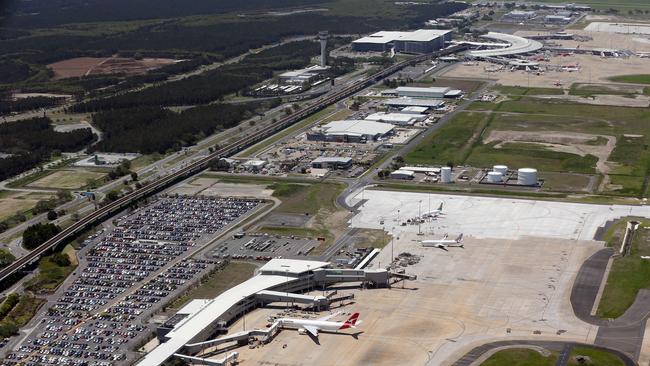
The lack of a curfew was another drawcard — Sydney Airport restricts flights between 11pm and 6am to a limited number of low-noise aircraft, and Brisbane had no such restrictions.
BAC also intimately knew how the airline business operated, and worked with carriers and the state and federal governments to attract new flights.
And they never stopped planning.
Extra flights meant changes to flight paths — and would ultimately drive a need for a second runway — but they also meant more aircraft noise, and much of BAC’s early work involved communicating expansions plans to Brisbane residents in a process currently being repeated as the parallel runway moves closer to completion.
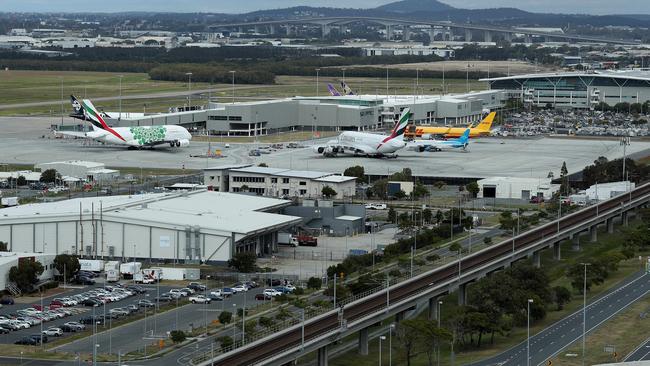
GROWTH SPURT
Growth in annual passenger numbers has been extraordinary. In 1997 — the year Brisbane Airport was privatised — total passenger volume was about 10 million. Last year, it surpassed 23.6 million — with six million of those travelling internationally.
Ground access to the airport was limited to road until a dedicated privately owned rail line was opened in 2001, with the Airport Link road tunnel significantly improving access to the city in 2012.
Road travel time via the tunnel is about a third of the average journey time needed for a trip between Melbourne Airport and the CBD.

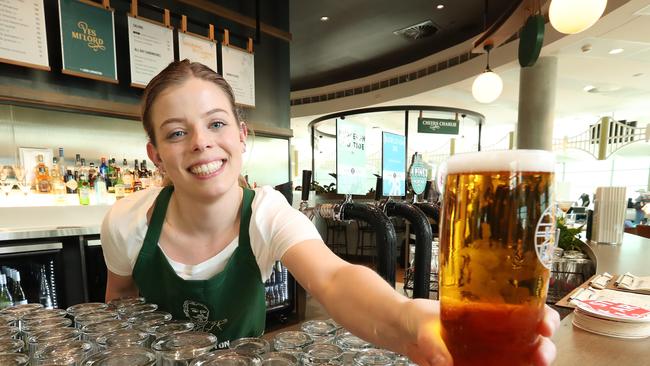
A factory outlet complex, a Woolworths, Dan Murphy’s, three on-airport hotels, expanded duty-free offerings, multi-level carparks, ongoing terminal improvements, warehouse and office developments, restaurants (including at least three hamburger brands), golf driving range, and numerous aviation service facilities are among the additions since then, with a major auto mall complete with high-speed test track under construction. There’s even a dentist. And a gym. And a furniture shop. Got a sore tooth? Need a new lounge? The airport has you covered. BAC says more than 425 businesses are located at the airport, employing almost 24,000 people, with growth expected to surpass 50,000 within 15 years.
While much of the expansion was carefully planned — a series of Masterplan documents have been a blueprint for growth over the past 20 years — there were some unexpected tailwinds that fast-tracked progress.
One of them was the arrival of serious competition in the domestic aviation market. The arrival of Richard Branson’s Brisbane-based offshoot in 2000 meant three serious domestic carriers were competing — Ansett, which collapsed the following year, Qantas and Virgin Blue.
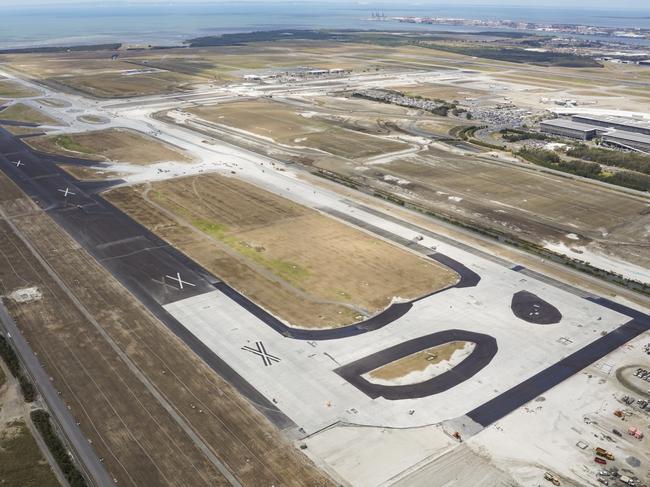
Greater domestic airline competition meant more Australians began flying for business and pleasure — and spending their money on airport parking and retail outlets. There was also the resources boom, an on-again, off-again cash cow for the wider economy that delivered significant benefits to Brisbane Airport: the army of FIFO workers travelling between Brisbane and regional Queensland guaranteed not only retail customers (and filled the Qantas Club) but also ensured a solid flow of parking revenue.
FIFO also drove additional business for not only the major carriers but also airlines such as Alliance, a long-term BAC tenant that runs a combination of scheduled and charter services.
The arrival of low-cost carriers such as Jetstar and Tiger also helped, as did the growth of southeast Queensland.
The Courier-Mail and the Queensland Government had campaigned for direct flights to the US, something Qantas had resisted based on passenger forecasts, until they were convinced they could fill their planes and introduced daily services.
Twenty-two years since the airport was privatised and the original purchase price looks like good value — sustained expansion has helped drive revenue growth at the airport with last year’s operating revenue $776 million — 56 per cent of the original price paid — and almost $100m up on the 2017 result. Profit for the year was $230m, up 28 per cent on the previous year.
So did BAC deliver on Rooijmans’ “city airport/airport city” pitch? If a city is a place with thousands of people and businesses, with roads and rail and air links, with shops and supermarkets, restaurants, gym, childcare and a hub for trade and local commerce, then it’s certainly on route.

